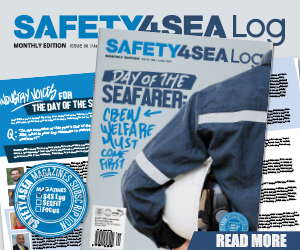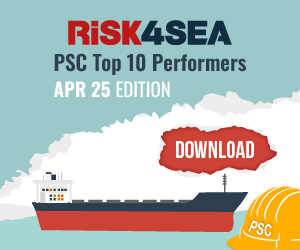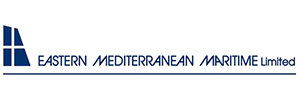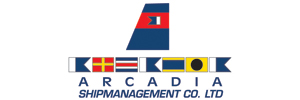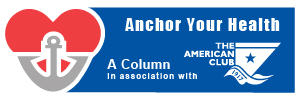Proinde P&I Club informs that navigating the Amazon requires careful attention to draft limits, security hazards, and specific pilotage regulations.
Master’s duty to care and report
Under the maritime authority’s norms and standards for the Amazon and relevant laws, shipmasters and skippers have overriding authority and responsibility to protect their crew, ship and cargo and to adopt preventive measures to ensure the vessel’s safe operation. Likewise, the crews must cooperate in the ship’s surveillance in their own interest and immediately report any suspicious activity to the officer of the watch.
In the aftermath of an assault or armed robbery and as soon as possible, the master must issue a report detailing the circumstances of the event and the preventive measures adopted, along with a description of the perpetrators, their weapons and means used to board the vessel, inventory of items stolen, and if any crewmember has been subjected to violence or other ill-treatment.
The report should be forwarded to the Port Captaincy to investigate the breach of maritime security and the Federal Police for the criminal investigation and shared with the flag authority and relevant international organisations.
Furthermore, Proinde P&I Club has provided operators with a collection of basic safety recommendations to be implemented when navigating these waters. These are are as follows:
Basic safety recommendations
- Inquire in advance with local agents about any local security issues and emergency telephone numbers for the local pilot station, maritime and port authorities
- Always follow the Ship Security Plan (SSP), ISPS Code, COLREG rules, as well as IMO and industry guidelines on precautions against piracy and armed robbery
- Establish (and regularly test) communication methods for external and in-vessel support
- Secure and lock portholes and accesses to the living quarters, engine room, and bridge
- Maintain a permanent watch on the VHF channel 16
- Conduct regular rounds on deck, watch the anchor chain, and monitor the approach of suspicious boats
- Keep the vessel’s deck, access points, and outer side well-lit and gangway ladders raised at anchor or alongside
- Demand good service from compulsory local watchmen, have them identify all personnel entering and leaving the ship, regardless of the vessel’s visitor controls, and do not allow them to leave the post unless they are relieved by another watchman or crewmember
- When alongside, maintain the shoreside gangway ladder well-guarded and the seaside ladder stowed and secured in place
- Keep a crewmember guarding the gangway, controlling shore visitors’ access, and another watching the deck, paying attention to the mooring ropes and the seaside board. Maintain a detailed log of visitors and ensure they wear adequate PPE while on board
- Conduct bag checks at entry and exit at random and whenever there is suspicion about the items carried by visitors and port workers
- Keep a lookout on the working hold not only to ensure that the cargo is in apparent condition but to ensure that no objects are loaded with the cargo or thrown into the hold
- Keep stevedores and other shore personnel away from crew quarters and non-working cargo holds, which must otherwise remain closed
- Record the activities of service and cargo barges moored alongside the vessel for the supply of bunkers, water, stores, or cargo transhipment
- Monitor small crafts and workboats lying in the vicinities and look for divers bubbles on the surface. Illuminate suspicious crafts and underwater activities with floodlights whenever necessary;
- Carry out a full search on the vessel and cargo to look for suspicious packages and bags before leaving a port or shifting to another berth in the same port
- If there is suspicion or information that drugs may have been smuggled on or into the vessel:
- If the finder is alone, call someone else to witness the position of the suspicious package before taking any action. Take photos/videos showing where they were found. Do not pierce or open the packageInform local authorities, Company Security Officer (CSO), the Port Facility Security Officer (PFSO), local agents, P&I correspondent and the flag State about the discovery that must be fully documentedKeep the suspicious package under the watch of at least two crewmembers until police arrive on the sceneConduct a thorough search to verify if more items have been secreted elsewhere on the vesselArrange an underwater inspection, including videos and photographs, by a reliable diving company accredited by the port and maritime authorities
- Cooperate fully with the local authorities for the relevant inquiries and investigations
- In case of threat or actual assault on the ship:
- Sound the vessel’s general alarm and muster the crew in accordance with the SSP
- Call local authorities and nearby ships via VHF channel 16 and emergency phone numbers, CSO, local agents, P&I correspondents and the flag state
- If possible and safe to the crew according to the master’s judgment, take measures to repel or deter intruders, such as illuminating approaching boats with floodlights, blowing the vessel’s horn intermittently and, in extreme situations, directing water jets or nautical flares against boarding areas
- Cooperate fully with the local authorities for their inquiries and investigations into the incident.
Draft limits
Sailing restrictions are dictated by draft limitations at the North Bar for vessels leaving ports upstream of the Amazon River or draft limitations at the mouth of the Pará River for ships leaving the ports of Vila do Conde (Barcarena) and Belém through the Espadarte or Quiriri Channel.
Owners fixing vessels to operate in the Amazon ports are strongly advised to closely liaise with the local agents, pilot stations and designated port facility to confirm current draft restrictions at the anchorage, berth and throughout the river passage in and out.
Navigational and security hazards
Masters and crews of cargo ships and barges navigating the region must remain vigilant about navigation and security hazards in the Amazon. Barge convoys transporting consumer products and fuel cargoes are prone to cargo pilferage, armed robbery and looting, especially during the dry season, when ships move slower along the rivers. To reduce these risks, it is essential to devise a proper passage plan and implement necessary preventive measures as outlined in the ISPS Code and the ship security plan.
Particular attention should be given to:
-
Ensuring nautical charts are up to date and navigation equipment, including AIS and radars, is in perfect working condition before entering and leaving the Amazon
-
Adhering to standing procedures and rules set by the local maritime authority and the notices to mariners and radio navigational warnings issued by the Brazilian Navy
-
Maintaining a permanent watch on VHF channel 16
-
Being vigilant for nearby barge convoys and small craft, such as barges, riverboats, mining rafts and canoes, many of which are made of wood and undetectable by the ship’s navigation equipment.
Pilotage in the Amazon
Three different pilotage zones cover the Amazon ports, and specific rules and tariffs apply concerning the hiring and cancellation of river pilots. When navigation incidents happen with the vessel under pilotage or after the window for cancelling the pilot has passed, extra pilotage charges can substantially increase the outlays involved. Therefore, shipowners and operators visiting the area should familiarise themselves with Amazon’s pilotage rules.











































